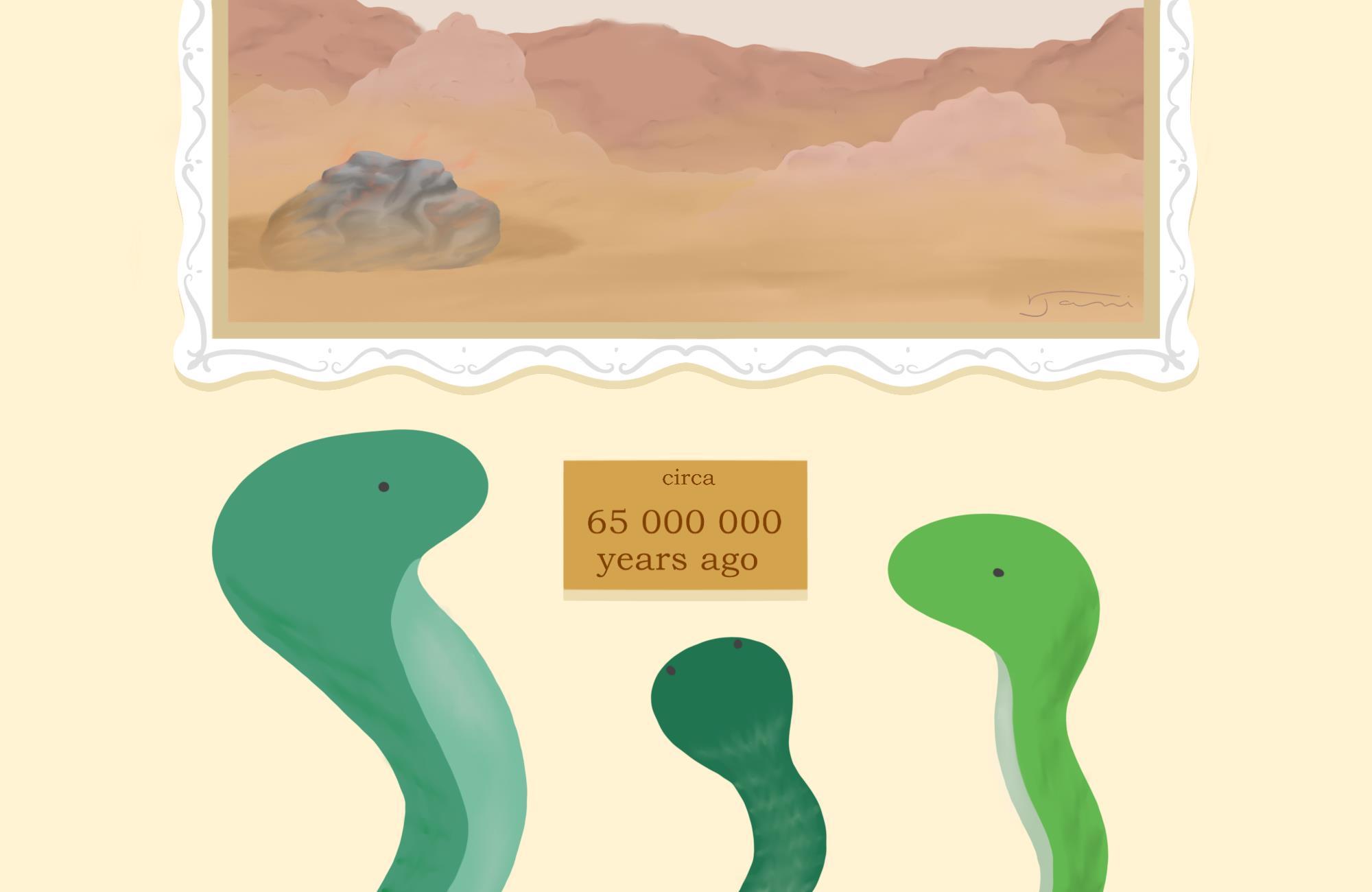Like something out of a Jurassic Park movie, new studies have revealed that all snakes are the descendants of the few survivors that were left on earth after the asteroid that resulted in the extinction of dinosaurs.
Researchers based out of the University of Bath published a study in Nature Communications outlining the fact that snakes, including about 4,000 living species, began diversifying around the time that an impact, widely thought to be an asteroid, wiped out dinosaurs towards the end of the Cretaceous period.
“The Cretaceous period took place from about 145 to 66 million years ago, most well known for being the time period when dinosaurs roamed the earth, before the extinction event,” explains second-year environmental science student Suraqa Malik.
The arrival of this conclusion came after researchers analyzed fossils and assessed the discrepancies between modern snakes to recreate the process of snake evolution. Doing this allowed the researchers to determine at what point in time snakes began evolving into their more modern form.
The results showed that all forms of living snakes evolved from the species spared by the asteroid 66 million years ago.
“Our research suggests that extinction acted as a form of ‘creative destruction’ — by wiping out old species, it allowed survivors to exploit the gaps in the ecosystem, experimenting with new lifestyles and habitats,” said Dr Nick Longrich, from the Milner Centre for Evolution at the University of Bath to ScienceDaily.
Researchers explain that snakes’ capacity to inhabit spaces underground and go long stretches of time without food was key to their survival. When their fellow Cretaceous cohabitants went extinct, it also gave way for snakes to occupy new niches and take advantage of their environments in ways they were previously unable to.
Many of the snake species that we know today, including vipers, cobras, pythons, boas, constrictors, and tree snakes emerged only after the extinction of dinosaurs.
Additionally, evidence was found for another major diversification among the species when polar ice caps formed at the start of the Ice Ages, seeing the planet shift from a warm greenhouse climate to the other end of the spectrum, with ice cold temperatures.
“The destruction of biodiversity makes room for new things to emerge and colonize new land masses. Ultimately life becomes even more diverse than before,” Longrich continued.
Findings also revealed a change in snake vertebrae, which allowed some species to grow up to 10 metres long. Changes in geographic location were also found, as the study suggests that the ancestor of living snakes likely resides somewhere in the Southern Hemisphere with snakes appearing to have Asia after the extinction first.
“I find it very interesting that snakes have been able to survive so long in all kinds of harsh conditions, similar to sharks. I’ve read that they can also be very dangerous predators, with around 600 species being venomous,” says second-year computer science student Ajay Singh.
Presently, snakes can be found all across the globe in a wide variety of ecosystems. At least one species of snake exists on every continent except Antarctica.


